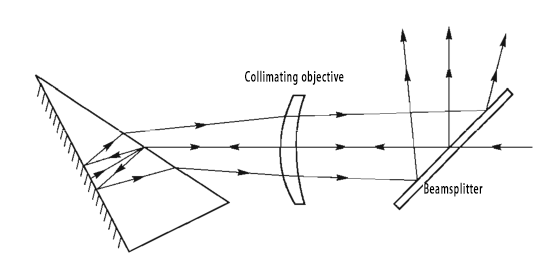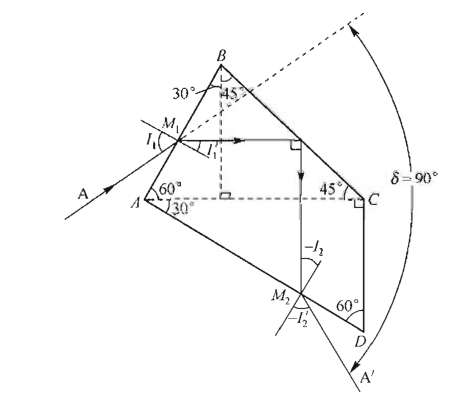Prisms are essential components in optical systems, serving as key tools for manipulating and analyzing light. Among their many applications, dispersion prisms are particularly important for separating light into its constituent wavelengths, a process known as spectral dispersion. Three commonly used dispersion prism systems are the Littrow prism, Amici direct-vision prism, and Perrin-Prosa prism. Each offers unique advantages in terms of design, material efficiency, and performance.
Littrow Dispersion Prism: Compact and Efficient Design
The Littrow dispersion prism is a compact and efficient design that utilizes reflection to achieve dispersion. As shown in Figure 1, this prism consists of half a 60° prism with a reflective film layer deposited on the long side of the right angle. Through internal reflection, the half-prism functions as a full 60° dispersion prism.
Compact Structure: The Littrow prism system is highly compact, making it ideal for space-constrained applications.
Material Savings: For expensive materials such as quartz, the Littrow prism can significantly reduce material usage, lowering costs while maintaining performance.

Amici Direct-Vision Prism: Dispersion Without Deflection
The Amici direct-vision prism is a unique design that allows certain wavelengths of light to pass through without deflection, while other wavelengths are dispersed to both sides. As shown in Figure 2, this prism consists of three individual prisms:
Central High-Dispersion Prism: The middle prism has a higher dispersion capability than the two outer prisms, creating a zero-deflection condition for a specific intermediate wavelength.

Dispersion Effect: Light with longer and shorter wavelengths than the intermediate wavelength is deflected to either side, resulting in spectral dispersion.
No Deflection for Intermediate Wavelength: This feature makes the Amici prism particularly useful for applications where maintaining alignment of a specific wavelength is critical.
Perrin-Prosa Dispersion Prism: Combining Reflection and Dispersion
The Perrin-Prosa dispersion prism is a versatile design that combines the functions of reflection and dispersion. As shown in Figure 3, this prism can be manufactured as a single piece of glass, yet it effectively acts as three prisms:
Two 30° Dispersion Prisms: These prisms handle the dispersion of light.
Isosceles Right-Angle Reflection Prism: This prism serves as a reflector, ensuring the light follows the desired path.
Minimum Declination Angle: The Perrin-Prosa prism has a minimum declination angle of 90°, which is independent of wavelength, providing consistent performance across different spectral ranges.

Comparison of Dispersion Prism Systems
Prism Type | Structure | Key Feature | Application |
Littrow Prism | Half of a 60° prism with reflection | Compact, material-efficient | Space-constrained systems |
Amici Direct-Vision Prism | Three-prism design | Zero deflection for intermediate wavelength | Wavelength alignment in scientific tools |
Perrin-Prosa Prism | Single-piece design | Combines reflection and dispersion | Versatile optical instruments |
Dispersion prisms, including the Littrow, Amici, and Perrin-Prosa designs, play a crucial role in optical systems by enabling precise manipulation of light spectra. Each type offers unique advantages in terms of compactness, material efficiency, and performance, making them essential tools for applications ranging from spectroscopy to imaging and communication.
Bena Optics specializes in the design and manufacture of high-performance prisms tailored to meet the needs of modern optical systems. Our prisms are engineered for precision, durability, and efficiency, ensuring optimal performance in a wide range of applications.
With a commitment to innovation and quality, Bena Optics is at the forefront of optical component development, providing reliable solutions for the most demanding optical challenges.